Historic Sights
Former British Consulate at Dagou
.jpg)
Built in 1865 during the Ching Dynasty, The Former British Consulate is located on a small hilltop overlooking Hsizuhwan Bay. It was the first consulate and Western style house built by the British in Taiwan. The beautiful terrace gives it a very British appearance. Inside features a display of precious historical artifacts. The former consulate is therefore another Museum of History. Outside, the view of Hsizuhwan Bay can be seen on one side, while the other looks out over the Kaohsiung Port. Recently leisure and dining areas have been added, visitors can now enjoy a meal or a pot of tea within the building. A new vitality has been given to the building, making it one of the most popular attractions in Kaohsiung.
◎Excerpt from the “KAOHSIUNG TRAVEL ONLINE” website.
.jpg)
Takao Railway Museum
.jpg)
Bureau of Cultural Affairs Kaohsiung City Government authorized Railway Culture Society, Taiwan to make good use of the unused space of the old Kaohsiung Harbor Railway Station of Taiwan Railways Administration, and turn it to be an exhibition site of railway antiques for citizens to experience the old railway operation.
Outside Takao Railway Museum is a bicycle lane for access to Fishermen’s Wharf and the bank of Love River. When cyclers ride bicycles around here on a breezy night, they are welcome to walk in the museum to feel the nostalgic experience. In such a busy city there is still a small corner keeping the history of olden cargo train and telling us the leisure lifestyle of people of the old days.
.jpg)
Gushan Ferry Pier
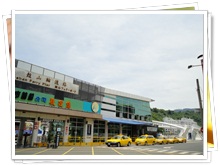
In Ming and Qing Dynasties the transportation tools between Cijin and Gushan were bamboo rafts and sampans only, so that traffic accidents happened very often. There was even traffic disruption on stormy days, making the water transportation between these two places very inconvenient. After Kaohsiung was governed under city system in 1924, water transportation was passed to the local government for operation, making it become one of the public utilities run by the city government. In 1985 the sea transportation tool was improved to be two-story sightseeing ferry traveling between Gushan and Cijin.
Ferry is the most convenient transportation tool between Gushan and Cijin. This is why long queues of motorcycles and citizens are always seen in the ferry pier. The ferry trip for Cijin Ferry takes 10~20 minutes, and passengers can appreciate the beautiful scenes of Kaohsiung Harbor in the trip. Therefore, apart from offering traffic connection for the citizens of Gushan and Cijin every day, Gushan Ferry pier has also become a tourist feature of Kaohsiung City.
.jpg)
Kaohsiung Museum of Fine Arts
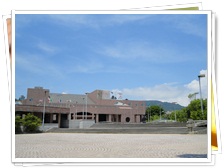
The Kaohsiung Museum of Fine Arts is located within the Neiweipi Cultural Park in the Gushan District and was opened in June 1994. It is the third public museum in Taiwan. The Sculpture Park has sculptures from different periods on display. Inside the museum there is a collection of important Taiwanese artworks. International art exhibitions are often held here, along with art by local artists and a variety of creative forums. The square and outdoor cafe outside the museum provides a natural space for visitors to relax. There is also a Children's Museum of Art and Creativity and a "Kids' Artistic Garden". All these facets come together to transform the Museum into a multi-functional leisure park, combining art, culture, creativity, ecology and education.
◎Excerpt from the “KAOHSIUNG TRAVEL ONLINE” website.
◎Official Website:http://www.kmfa.gov.tw/KMFAENG/home01.aspx?ID=1
.jpg)
Syongjhen North Gate
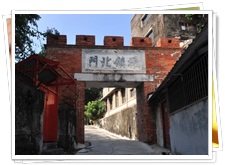
The four Chinese words of Syongjhen North Gate were inscribed on the horizontal board above the gate of Shaochuantou Fort, which was a small fort constructed during the reign period of Emperor Guangxu in Qing Dynasty. Together with Cihou Fort in the southern coast of the harbor also constructed during the same period, the two forts formed two huge horns protecting Takao Harbor. After the Japanese colonial period, Shaochuantou Fort gradually fell into disuse, and the original cannons did not exist anymore, just leaving the arc-shaped cannon platform. Today visitors can still see the gate of the fort and the complete thick walls.
The Chinese characters of Syongjhen North Gate shown above the gate are four words in large size and with powerful strokes, which are matching well with the magnificence of the fort gate. Although the fort was designed by the Western designers, it was added with some Chinese features, and is still very strong today. These features show that the construction techniques of that period were brilliant.
.jpg)
Butokuten (Wude Martial Arts Center)
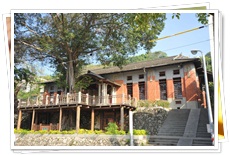
The construction of Butokuten was completed in 1924. Its interior space was divided into two parts: Kendo Zone in the east, and Judo Zone in the west. The building provided a place for policemen and young students to practice judo and kendo during the Japanese colonization period. At that time Butokuten held martial arts meeting regularly in order to promote martial arts culture.
In 1999 Butokuten in Gushan District was regarded by Kaohsiung City Government as a historical site of the city, and actively made restoration plans for the building in 2004. After restoration project was undergone for one year, Butokuten became the only historical site in Taiwan with its function after restoration being consistent with that before restoration. Nowadays it holds normal activities of demonstrations, guided experience, theater performance and cultural learning, turning it to be a historical martial arts space with combination of culture, sports and tourism. Visitors are able to re-experience the spiritual and cultural contexts of martial arts.
.jpg)
Martyrs’ Shrine
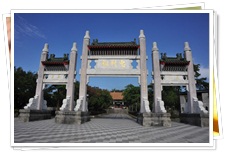
Located at the top of Shoushan Mountain, it was originally a Japanese Shinto shrine. The Japanese rebuilt into the "Kaohsiung Shrine" to encourage the sense of unity during the World War II. After Taiwan's liberation, the government immediately converted it into the Martyrs' Shrine to honor patriots. These days top local government officials perform important ceremonies here. Reconstructed in 1974, it now features a "Chinese palace" style of architecture, exuding strength and purpose. Even though trees and ancient pines surround it, fabulous views of Kaohsiung's bay can still be enjoyed. This is one of Kaohsiung's best natural sites.
◎Excerpt from the “KAOHSIUNG TRAVEL ONLINE” website.
.jpg)
228 Memorial Monument

The 288 Memorial Monument is located beside the Yuanheng Buddhist Temple, on the side of Shoushan mountain. Built in 1993, it commemorates the 228 Incident and its victims. On February 28th there is a commemorative ceremony to honor the victims of this solemn historic event. Located in a very peaceful and quiet area, this location offers great views of Kaohsiung.
◎Excerpt from the “KAOHSIUNG TRAVEL ONLINE” website.
.jpg)
Chiang Kai-Shek Villa
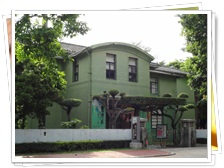
Established on the campus of National Sun Yat-sen University in 1937, Chiang Kai-Shek Villa is a two-story building constructed in Japanese style. The breakfast room, study, bedroom, kitchen and entourage's resting place of President Chiang Kai-Shek and Mrs. Chiang were preserved in the villa. A part of its space has been changed to be exhibition hall of artworks, which is called Siwan Art Gallery. Not only the original appearance of the historical building is well maintained, the villa has also become an important artistic and cultural base in Sizihwan.
.jpg)
Yuanheng Buddhist Temple
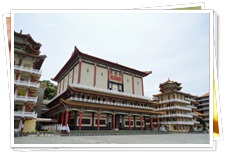
Built in 1743, it was originally called the Yuansing or Yanzih Temple. In 1891, it was completely destroyed by a fire. After being relocated a number of times, it was eventually moved to its present location on the mountain and renamed Yuanheng Buddhist Temple. When the main shrine was built in 1973, an ancient tablet dating from 1772 was discovered. This provided a historical record of the names of the head priests that had served the temple in the past. These records revealed the temple has been in existence for over three centuries, making it one of the oldest temples in Taiwan. The temple is dedicated to the Bodhisattva Guanyin. It exhibits stately and elegant architecture. The platform in front of the temple offers excellent views of the entire city. It is particularly scenic at sunrises and sunsets.
◎Excerpt from the “KAOHSIUNG TRAVEL ONLINE” website.
.jpg)
Shihba Wanggong Temple

Located on an outcrop near the Kaohsiung Port entrance, the temple buildings enjoy excellent views while retaining their traditional Ming-nan style. A steep and perilous set of stairs leading up to the temple is said to be a test of faith for believers. According to stone tablets in the temple, in the late 17th century during the rule of Emperor Kangxi, 18 traders from China landed in Hsitzuwan Bay and became settlers. They were later executed as mutinous runaways. These 18 pioneers' spirits moved local residents and they collected their bodies and placed them at the shrine for worship. This is the earliest recorded origin of the Wanggong Temple. During the Japanese Colonial era, the Japanese carved out the Hsitzuwan Cave in order to build the Kaohsiung Port. The construction did not go well and many casualties resulted. At the residents' advice, the Japanese officials burnt incense to honor the spirits of the 18 pioneers. Construction then proceeded smoothly. Local residents raised funds to build the earliest Shihba Wanggong Temple (18 Princes Temple), which was located on the site of Sun Yat-Sen University's athletics field. In 1984, when the university was constructed, the temple was relocated to its current site on the outcrop. As the number of people coming to see Hsizuhwan Bay by night has increased, the result has been an increase in prosperity for the temple.
◎Excerpt from the “KAOHSIUNG TRAVEL ONLINE” website.
.jpg)
Daitian Temple
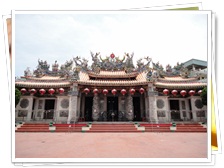
Daitian Temple, built in Hamasen in Kaohsiung in 1950’s and also known as Hamasen Great Temple, was once the first office of Kaohsiung City Government, and also the old location of Shuang Ye Elementary School. The typical Taiwanese temple was constructed in traditional Fujianese style adopting Sieshan-type layered eaves. The girders and main beams inside the temple are richly carved and attached with paintings and sculptures, which are exquisite artworks out of the hands of different great masters, and have increased elegance and grace to the space. These artworks include the Master Pan Li-Shui’s paintings of Door Gods, relief, wall paintings, clay statues and girder paintings, Master Yeh Jin-Yi’s clip art pictures, Master Tsai Yuan-Heng’s Chinese calligraphy, and Master Ye Jing-Yi’s wood carving.
.jpg)
Longquan Buddhism Temple
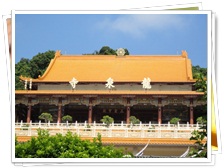
The Longquan Temple was once known as the Yongquan Temple. The water inside the well at the back of the temple suddenly rose as Chenggong Zheng prayed for rain, hence the name Longquan Temple; after it was nearly destroyed by fire in 1981, local followers came together and appealed for donations, and the temple was rebuilt. Since the temple was sitting on a dragon cave (a Feng Shui term), its name was changed to Longquan Buddhism Temple.
◎Excerpt from the “KAOHSIUNG TRAVEL ONLINE” website.
.jpg)
Shanhai Temple
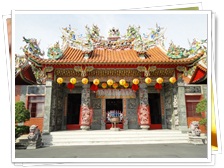
Legend has it that the early settlers followed Koxinga's troops from Fujian Province's Quanzhou and Zhangzhou in two sailing ships to Taiwan where they settled around Chaishan in Taozihyuan. Their guardian god – the Chu Fu Cian Suei – was said to have ensured their safety and prosperity over the generations. To thank the god for his protection, a temple was built at the current location and named the "Chaishan Shanhai Temple". The name "Shanhai Temple" represents how the god watched over its worshippers in the mountains and at seas. During World War 2, military necessity meant most of the Chaishan residents moved elsewhere and did not return until the war was over. After the Nationalist Government evacuated to Taiwan, trade and industry boomed, and Chaishan residents working in other regions achieved business success. To give back something to their hometown, a Shanhai Temple Rebuilding Committee was formed by the worshippers to carry out the necessary preparations. With the support of the Kaohsiung City Government, local military garrison and local people's representatives, construction was begun in 1984. Over $40 Million and 5 years later, the front and side halls as well as the courtyard were completed. These were beautifully decorated and a wondrous sight to behold. The statues for Wun Fu Cian Suei and Chih Fu Cian Suei were added to the temple during the reconstruction, so the "Shanhai Temple" is now dedicated to three gods: Chu Fu, Wun Fu and Chih Fu.
◎Excerpt from the Kaohsiung City Archives website.
.jpg)